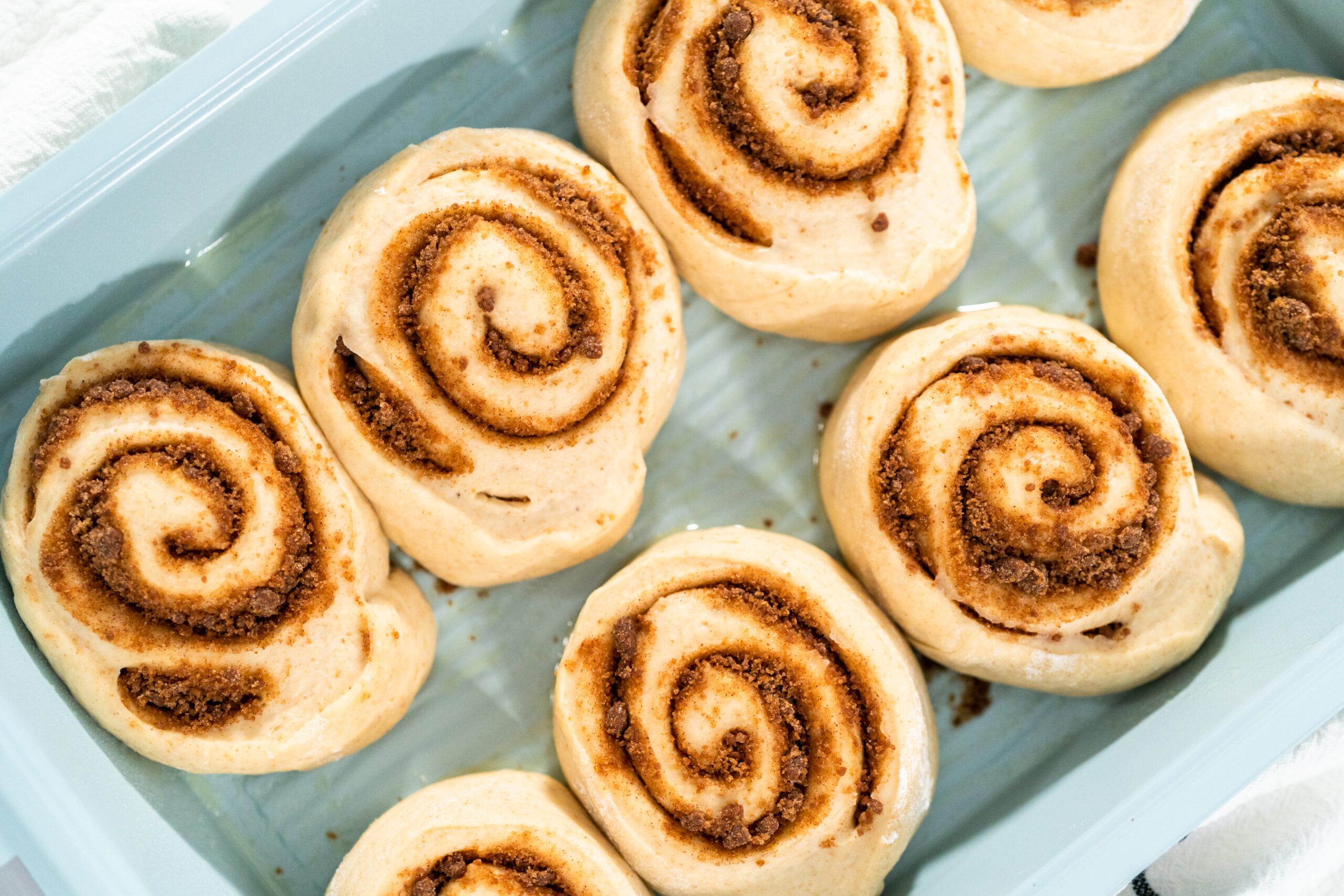Baking sourdough cinnamon rolls is a labor of love, but there’s nothing more disheartening than pulling them out of the oven only to find that they didn’t rise. It can be frustrating, especially after putting in all the time and effort. But don’t worry! I’m here to walk you through the possible reasons behind this flat disappointment and help you fix it for your next bake.
What Causes Sourdough Cinnamon Rolls Not to Rise?
When your sourdough cinnamon rolls don’t rise, it’s usually due to a few common culprits. These might include a weak starter, improper fermentation, incorrect dough temperature, or even the quality of the flour. Each of these factors plays a significant role in the rising process. Let’s dive into each one and see where things might have gone wrong.
Understanding Your Sourdough Starter
Your sourdough starter is the heart of your rolls. If it’s not strong enough, your dough won’t rise properly. A weak starter is one of the most common reasons why sourdough cinnamon rolls fail to rise. To ensure your starter is strong, it should be active, bubbly, and able to double in size within 4-6 hours after feeding.
If your starter isn’t up to the task, here’s what you can do:
- Feed it regularly: Keep your starter on a consistent feeding schedule.
- Use warm water: Feed your starter with warm water to boost its activity.
- Discard half before feeding: This keeps the acidity levels in check and ensures your starter remains healthy and vigorous.
By taking these steps, you’ll ensure that your starter is strong enough to leaven your dough.
Temperature: The Silent Saboteur
Temperature is a crucial factor in baking, especially when it comes to sourdough. If your dough is too cold, it will rise slowly or not at all. On the other hand, if it’s too warm, it might rise too quickly and collapse before baking.
Here’s how to control the temperature to get that perfect rise:
- Room temperature: Keep your dough in a warm, draft-free area of your kitchen. Ideally, the room temperature should be around 75°F (24°C).
- Proofing box: If you live in a cold climate, consider using a proofing box or a warm oven with the light on to create a stable environment for your dough.
- Refrigeration: Cold proofing can slow down fermentation, giving you more control. Just make sure to let the dough come back to room temperature before baking.
Controlling temperature ensures that your dough rises at the right pace, leading to beautifully fluffy rolls.
Fermentation Time: Patience is Key
Fermentation is the process where the yeast and bacteria in your starter break down the sugars in the flour, producing carbon dioxide and alcohol, which cause the dough to rise. If your fermentation time is too short, your dough won’t rise enough. Conversely, if it’s too long, the dough may collapse.
How do you know if your dough has fermented long enough?
- Look for bubbles: The dough should be bubbly and slightly domed.
- Poke test: Gently poke the dough with your finger. If it springs back slowly, it’s ready to be shaped. If it springs back quickly, it needs more time. If it doesn’t spring back at all, it’s over-proofed.
The key to successful fermentation is patience. Give your dough the time it needs, and you’ll be rewarded with a perfect rise.
Flour Quality Matters
Not all flour is created equal, and the type of flour you use can greatly impact the rise of your sourdough cinnamon rolls. High-protein bread flour is generally the best choice for sourdough baking because it has more gluten, which gives your dough structure and allows it to trap the gases that make it rise.
Here’s what to consider when choosing flour:
- Protein content: Look for flour with at least 11-12% protein.
- Freshness: Use fresh flour for the best results. Flour that’s been sitting around for a while might not perform as well.
- Brand matters: Some brands are more reliable than others, so experiment to find the one that works best for you.
By choosing the right flour, you’ll give your dough the strength it needs to rise properly.
Kneading Techniques
Kneading is essential for developing gluten, which traps the gases produced during fermentation and helps your dough rise. If you don’t knead the dough enough, or if you over-knead it, your rolls might end up flat.
To get the kneading just right:
- Knead until smooth and elastic: The dough should pass the “windowpane test”—stretch a small piece of dough; if it forms a thin, translucent membrane without tearing, it’s ready.
- Avoid over-kneading: Too much kneading can break down the gluten structure, leading to flat rolls.
- Use the right technique: Fold and press the dough rather than aggressively pulling or tearing it.
Proper kneading ensures that your dough has the strength to rise and hold its shape during baking.
Shaping and Rolling Dough
The way you shape and roll your dough can also affect the rise of your sourdough cinnamon rolls. If you’re too rough, you could knock out all the air, leaving your rolls flat.
Here’s how to shape and roll without deflating:
- Be gentle: Handle the dough with care to preserve the air bubbles.
- Roll evenly: Roll the dough out evenly, so it bakes uniformly.
- Don’t roll too thin: If the dough is too thin, it won’t have the structure to rise properly.
By being mindful of how you shape and roll the dough, you can avoid deflating it and ensure a good rise.
Common Mistakes to Avoid
Even the most experienced bakers can make mistakes. Here are some common errors that can cause your sourdough cinnamon rolls not to rise:
- Using cold ingredients: Make sure your ingredients are at room temperature before starting.
- Rushing the process: Sourdough takes time. Don’t rush the proofing stages.
- Incorrect measurements: Baking is a science. Use a kitchen scale for accurate measurements.
Avoid these pitfalls, and you’ll be on your way to perfectly risen rolls.
Troubleshooting: How to Fix Flat Rolls
If your sourdough cinnamon rolls didn’t rise, all hope is not lost. Here’s a step-by-step guide to troubleshooting and fixing the problem:
- Assess the starter: Is it active and bubbly? If not, give it a few more feedings before using it again.
- Check the dough temperature: Was the dough kept at a warm enough temperature during proofing?
- Examine the fermentation time: Did you give the dough enough time to ferment?
- Review the flour quality: Are you using high-protein bread flour?
- Reconsider your kneading technique: Did you knead the dough properly?
By going through this checklist, you can pinpoint where things went wrong and adjust accordingly for your next batch.
Related Recipes You Might Like
If you’re interested in more delicious recipes, check out some of these other great options:
- Smoked BBQ Chicken Thighs: The Ultimate Guide
- Beef and Broccoli Stir Fry: A Quick and Delicious Classic
- Tamale Pie Recipe: Easy, Flavorful, and Perfect for Family Dinners
- Best Canned Corned Beef Hash Recipe: Easy, Crispy, and Delicious
Nutrition Information
Here’s the nutritional breakdown for sourdough cinnamon rolls:
- Calories: 290 per roll
- Total Fat: 8g
- Saturated Fat: 5g
- Cholesterol: 30mg
- Sodium: 200mg
- Total Carbohydrates: 45g
- Dietary Fiber: 2g
- Sugars: 15g
- Protein: 6g
Conclusion
Baking sourdough cinnamon rolls that rise beautifully is a skill that takes practice and patience. By understanding the factors that influence the rise—like your starter’s strength, dough temperature, and fermentation time—you can troubleshoot and improve your baking process. With the tips and tricks outlined in this guide, you’re well on your way to mastering the art of sourdough cinnamon rolls.
Happy baking!
FAQs
- Can I still eat my sourdough cinnamon rolls if they didn’t rise? Yes, they might be denser, but they’re still safe to eat.
- How can I strengthen my sourdough starter quickly? Feed it regularly with warm water and keep it in a warm place.
- Can I use all-purpose flour instead of bread flour? Yes, but the rolls may not rise as well due to lower protein content.
- What if my dough is too sticky to knead? Add a little flour at a time until the dough is workable, but not too much.
- Is it okay to proof dough in the fridge overnight? Yes, cold-proofing slows fermentation and can enhance flavor.
- Why did my dough collapse during proofing? It might have over-proofed, meaning it rose too much and then fell.
- Can I freeze the dough before baking? Yes, but let it come to room temperature before baking.
- How do I know if my dough is over-proofed? If the dough doesn’t spring back when poked, it’s likely over-proofed.

